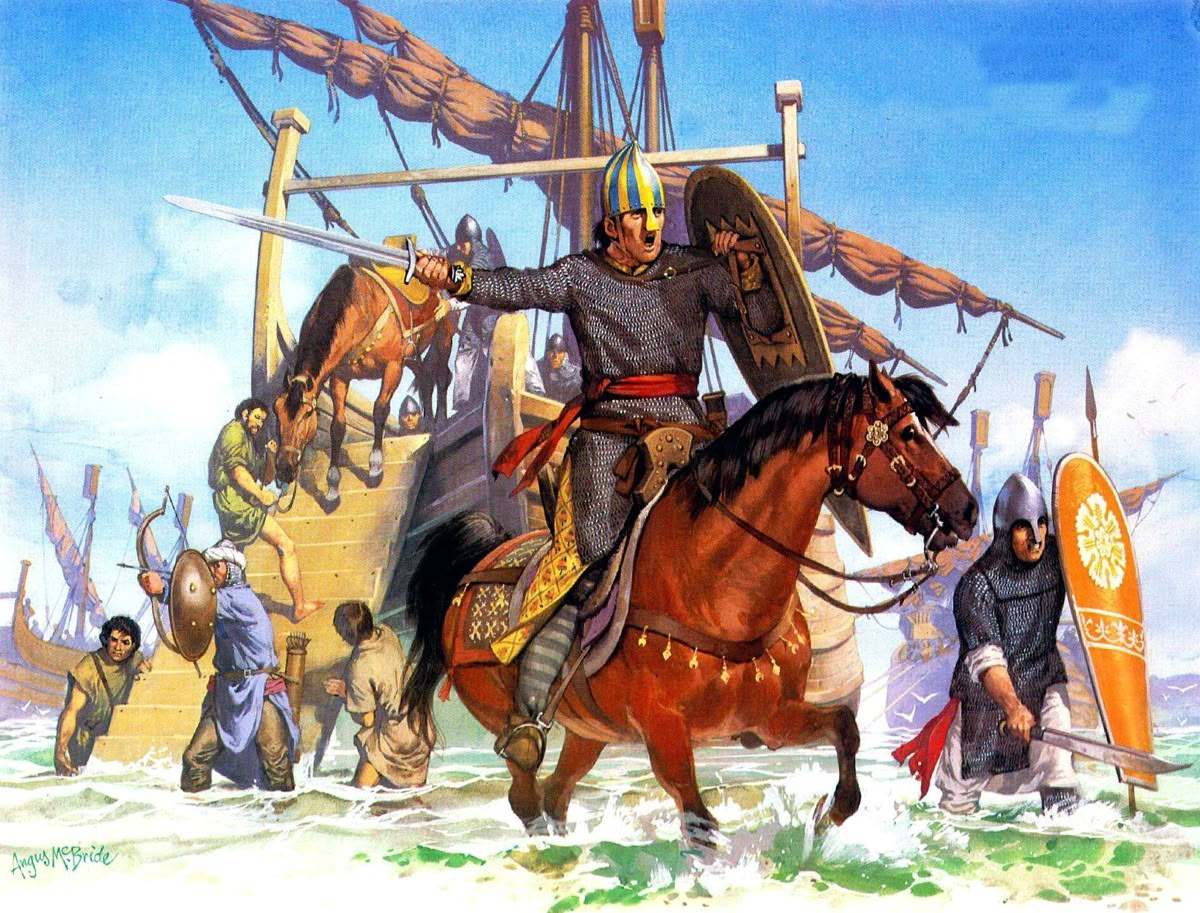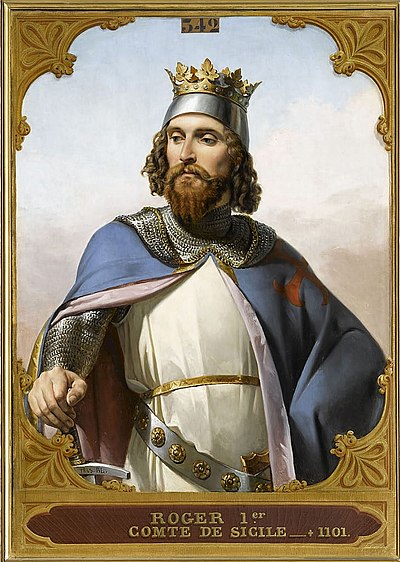Unlike the Norman conquest of England (1066), which took a few years after one decisive battle, the conquest of southern Italy was the product of decades and a number of battles, few decisive. Many territories were conquered independently, and only later were unified into a single state. Compared to the conquest of England, it was unplanned and disorganised, but equally complete.
Institutionally, the Normans combined the administrative machinery of the Byzantines, Arabs, and Lombards with their own conceptions of feudal law and order to forge a unique government. Under this state, there was great religious freedom, and alongside the Norman nobles existed a meritocratic bureaucracy of Jews, Muslims and Christians, both Catholic and Eastern Orthodox. The Kingdom of Sicily thus became characterized by Norman, Byzantine, Greek, Arab, Lombard and "native" Sicilian populations living in harmony, and its Norman rulers fostered plans of establishing an empire that would have encompassed Fatimid Egypt as well as the crusader states in the Levant.
The Norman conquest of southern Italy began an infusion of Romanesque (specifically Norman) architecture. Some castles were expanded on existing Lombard, Byzantine or Arab structures, while others were original constructions. Latin cathedrals were built in lands recently converted from Byzantine Christianity or Islam, in a Romanesque style influenced by Byzantine and Islamic designs. Public buildings, such as palaces, were common in larger cities (notably Palermo); these structures, in particular, demonstrate the influence of Siculo-Norman culture.































